pexpect模块
Posted 向前跑,带着冷眼与嘲笑
tags:
篇首语:本文由小常识网(cha138.com)小编为大家整理,主要介绍了pexpect模块相关的知识,希望对你有一定的参考价值。
pexpect用来启动子程序,使用正则表达式对程序输出做出特定响应,以此实现与其自动交互的python模块,当然我们可以使用他来做ssh登陆,ssh模块登陆还有一个基于python实现远程连接,用于ssh远程执行命令,文件传输等功能的ssh客户端模块paramiko。
在开发时也经常会使用pexpect模块,所以这里简单介绍一下pexpect。
run():直接执行命令返回结果和状态
run里有一个command参数,可以直接写命令然后拿到命令返回的状态和结果。
In [2]: import pexpect In [3]: pexpect.run("ls /tmp/")
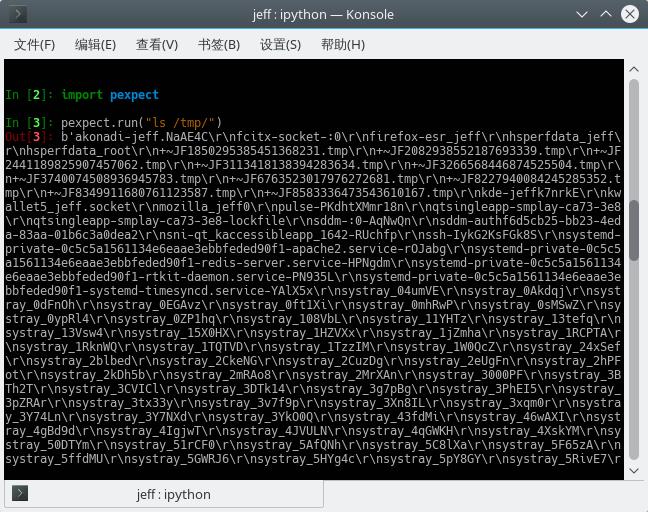
我的/tmp下的东西有点多,已经删除了部分,此时只拿到了执行的结果但是没有拿到执行的状态。
In [4]: pexpect.run("ls /tmp", withexitstatus=1)
withexitstatus为1则表示需要返回执行状态,默认不返回。
执行状态为:
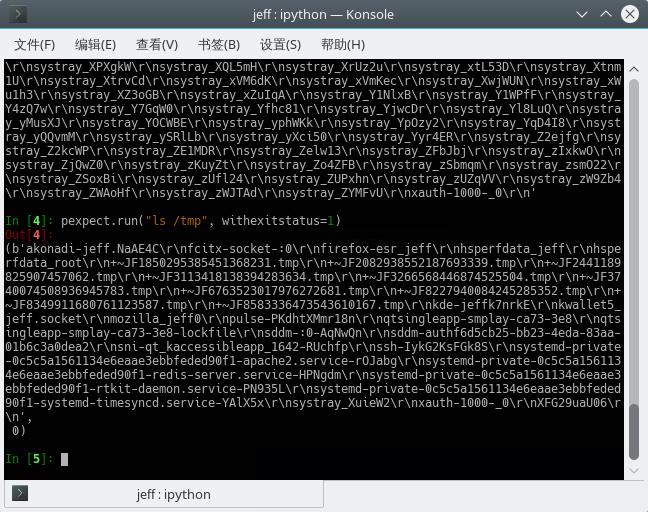
返回的结果是一个元组,下标1的值为0即执行成功,非0则为执行失败。
命令不存在时会报错,
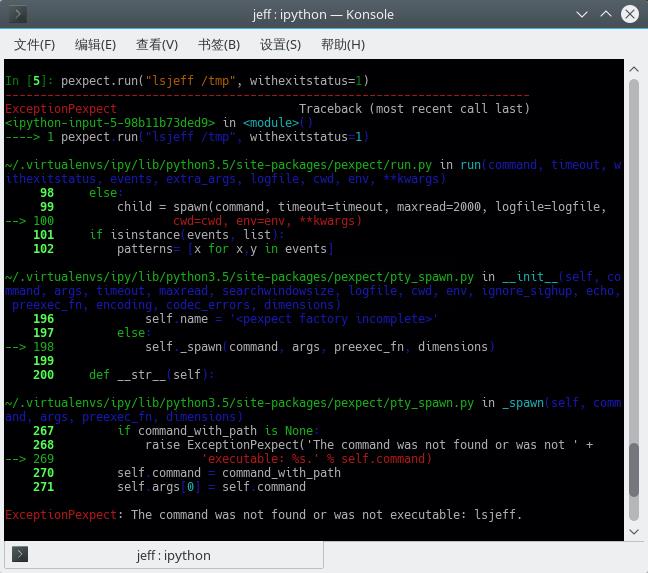
命令存在但是执行失败则打印错误信息,得到非0状态码。
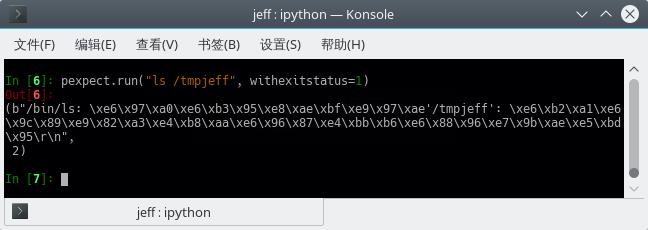
spawn
启动子程序,有丰富的方法实现对子程序的控制。
比如我们使用spawn进行ssh连接:
In [7]: ssh_aliyun = pexpect.spawn(\'ssh 120.79.254.225\')
In [8]: ssh_aliyun.expect("password:")
生成一个实例对象,使用在expect期望的结果中我们可以使用完全匹配也可以使用正则匹配。
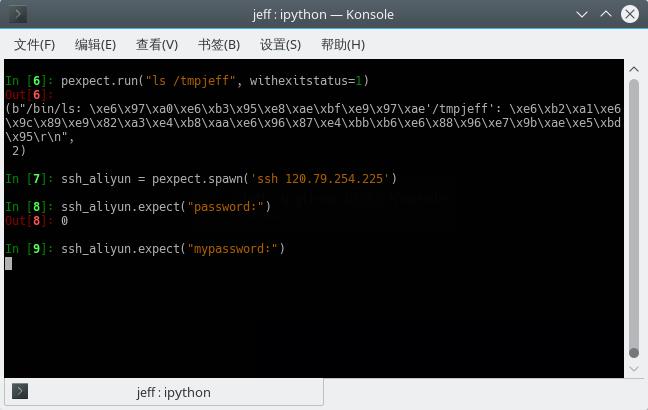
当匹配成功以后会返回状态码0,匹配字段不存在,则程序阻塞,知道timeout程序会报错。
注:expect中的$就是$不是正则表达式里的以某某结尾的意思。
当然我们不希望匹配不成功而导致程序崩溃,expect中也可以填入错误状态,或者多个期待值,放在一个列表中。
In [18]: ssh_aliyun = pexpect.spawn(\'ssh 120.79.254.225\') In [19]: ssh_aliyun.expect([pexpect.TIMEOUT, pexpect.EOF, "password:"]) Out[19]: 2
返回的结果为列表下标索引值。timeout则结果为0.
对于刚才的实例,我对阿里云服务器发起ssh远程连接,需要进行密码校验,那么我们如何进行命令键入呢。
我们可以使用send(),sendline(),sendcontrol(char)。向子程序发送指令。前两种就是发送指令,后一种发送控制符(比如发送ctrl+c中断命令)。
密码登陆的ssh脚本
import pexpect def login_ssh_passwd(port="",user="",host="",passwd=""): \'\'\'函数:用于实现pexepect实现ssh的自动化用户密码登录\'\'\' # print \'ssh -p %s %s@%s\' % (port,user, host) if port and user and host and passwd: ssh = pexpect.spawn(\'ssh -p %s %s@%s\' % (port,user, host)) i = ssh.expect([\'password:\', \'continue connecting (yes/no)?\'], timeout=5) if i == 0 : ssh.sendline(passwd) elif i == 1: ssh.sendline(\'yes\\n\') ssh.expect(\'password: \') ssh.sendline(passwd) index = ssh.expect (["#", pexpect.EOF, pexpect.TIMEOUT]) if index == 0: print("logging in as root!") #终端直接接管子程序会话,在终端直接操控ssh # ssh.interact() elif index == 1: print("logging process exit!") elif index == 2: print("logging timeout exit") else: print("Parameter error!")
通过密钥方式登陆
def login_ssh_key(keyfile="",user="",host="",port=""): \'\'\'函数:用于实现pexepect实现ssh的自动化密钥登录\'\'\' if port and user and host and keyfile: ssh = pexpect.spawn(\'ssh -i %s -p %s %s@%s\' % (keyfile,port,user, host)) i = ssh.expect( [pexpect.TIMEOUT,\'continue connecting (yes/no)?\'], timeout=2) # print \'...................................\',0 if i == 1: ssh.sendline(\'yes\\n\') index = ssh.expect (["#", pexpect.EOF, pexpect.TIMEOUT]) else: index = ssh.expect (["#", pexpect.EOF, pexpect.TIMEOUT]) if index == 0: print("logging in as root!") ssh.interact() elif index == 1: print("logging process exit!") elif index == 2: print("logging timeout exit") else: print("Parameter error!")
使用pexpect实现ssh远程登陆存在一些问题,依赖终端来完成登陆。在不同的登陆环境(系统不一致,端口不一致等)兼容性比较差。
在资产管理的登陆扫描探测的具体环境中不适合直接使用pexpect来操作。
以上是关于pexpect模块的主要内容,如果未能解决你的问题,请参考以下文章